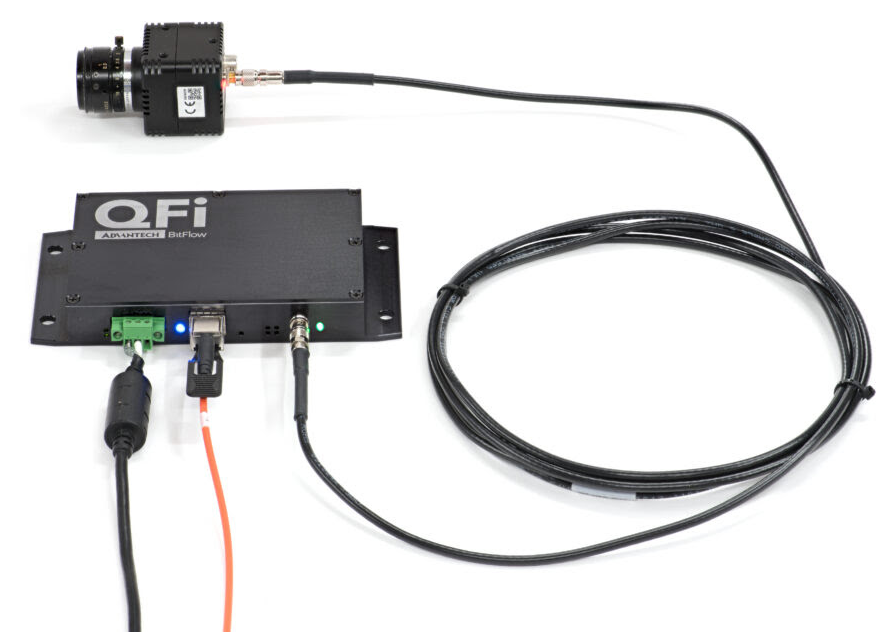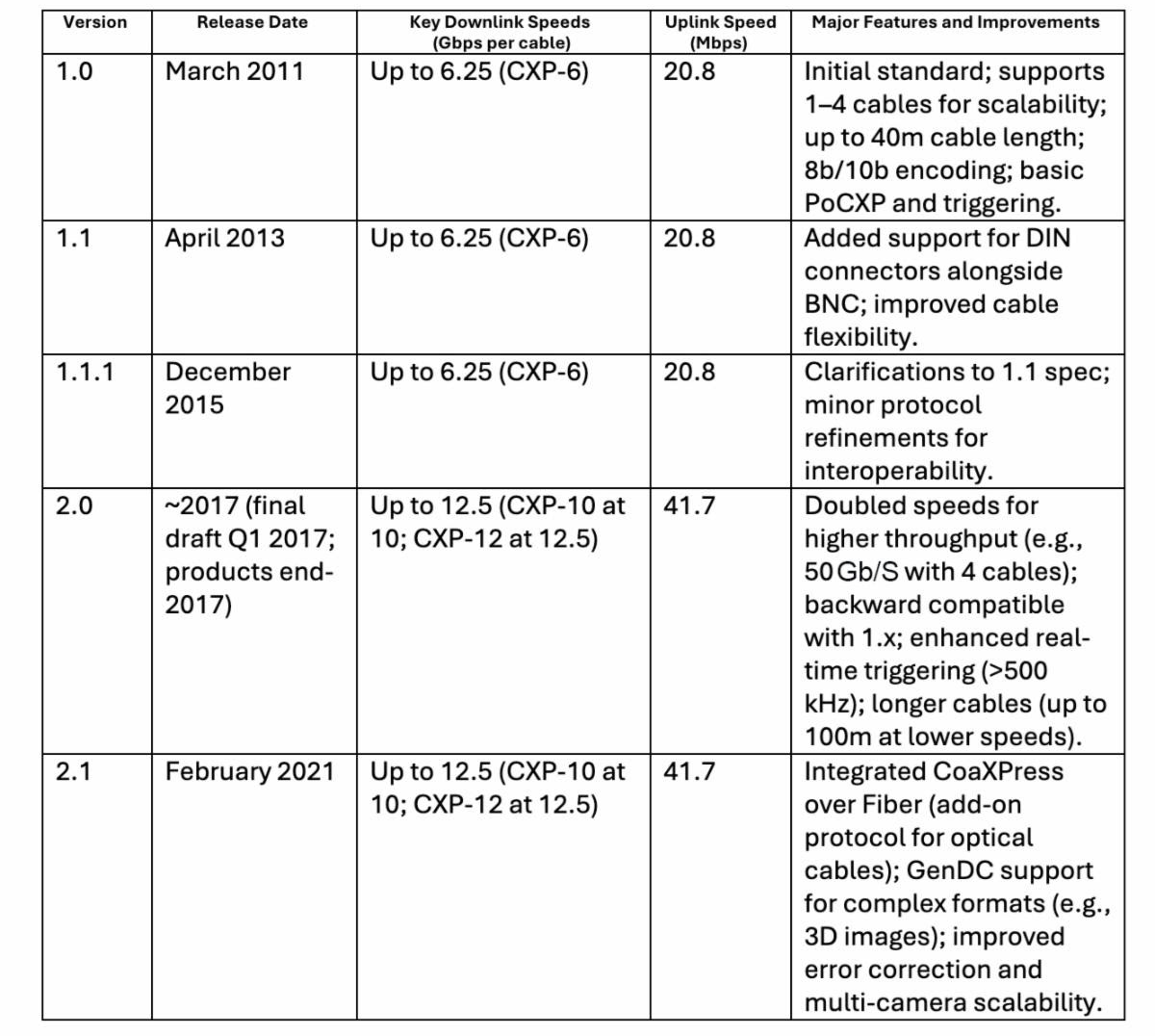While the release date for the CoaXPress v3.0 (CXP v.3.0) interface update hasn't been officially announced, the CoaXPress committee is actively working on this new version that will serve as the next major evolution in maintaining CXP's leadership in machine vision.
 BitFlow QFi CoaXPress copper-to-fiber converter. Image Credit: BitFlow
BitFlow QFi CoaXPress copper-to-fiber converter. Image Credit: BitFlow
Among other advancements, CXP v3.0 is expected to further integrate CoaXPress over Fiber (CoF) into the standard. In addition, nominal data rates are anticipated to be 25 Gbps per link, representing a doubling of the maximum speeds of the current 12.5 Gbps per link outlined in CoaXPress v2.1. If so, this will enable aggregate throughputs exceeding 100 Gbps in multi-cable, single camera setups.
Dynamic Evolution of CXP
To fully appreciate how rapidly CXP has progressed, you need to first delve into its recent past. This progression has solidified CXP as the premier interface for demanding, real-time vision systems for vendors and system integrators alike.
CoaXPress emerged in early 2007 to address the growing demands of CMOS imaging sensors requiring higher bandwidths than existing standards such as Camera Link or GigE Vision. A consortium of industrial imaging companies developed the first draft, leading to a demonstration at the 2008 Vision tradeshow and the Japan Industrial Imaging Association (JIIA) standardizing CXP in 2010. Next, CXP v1.0 was endorsed by the Automated Imaging Association (AIA) and European Machine Vision Association (EMVA). Since then, the CoaXPress committee has iteratively enhanced the standard, with version 2.1 released in February 2021 which introduced CoF as a standard extension.
The chart below shows the dynamic evolution of the CXP standard as demonstrated in increasing downlink and uplink speeds, and in its integration of new features.

New Capabilities in CXP v3.0
As mentioned earlier, the most notable change expected in CXP v3.0 is the formal integration of CoaXPress over Fiber which will expand CXP capabilities beyond coaxial to fiber optic cables. Fiber supplies better speed, bandwidth, security, and dependability than coax, allowing for more reliable and faster data transfer over longer distances with reduced signal loss. CoF would help boost nominal data rate to 25 Gbps from 12.5 Gbps per link to support faster frame rates for high-megapixel sensors without compromising latency, while also provide scalability for future system upgrades.
Importantly, CoF runs the existing CXP protocol using standard Ethernet physical-layer components, providing higher bandwidth along with improved stability, lower latency, and reduced overall costs by its use of Ethernet infrastructure. CoF also enables longer transmission distances beyond the current 35 meters at 12.5 Gbps to potentially several miles, making it ideal for large-scale industrial setups or remote monitoring.
While embracing CoF, CXP v3.0 is still expected to take a hybrid approach to cables, permitting seamless use of either 75-ohm coaxial cables or fiber optic links. This maintains its backward compatibility with coax. In addition, CXP v3.0 will likely build on the 42 Mbps uplink from CXP v2.0 to keep its low-latency real-time triggering, along with improvements in PoCXP power delivery and serial communication support.
BitFlow is Ready
BitFlow is preparing its customers for a CXP v3.0 future. BitFlow has introduced frame grabber solutions fully leveraging CoF, in addition to its CXP-6 and CXP-12 copper frame grabber lines.
- The BitFlow QFi CoaXPress copper-to-fiber converter uses CoF on the frame grabber side, plugging directly in to the BitFlow Claxon fiber frame grabber. bridges the gap between copper and fiber by directly connecting to the CXP camera using a standard coaxial cable. Depending on the CXP version, this cable can extend 130+ ft (40+ m), giving the integrator more options for where to mount the QFi.
- The BitFlow Claxon fiber frame grabber extends the reach of CoaXPress (CXP) over fiber optic cables, allowing for high-speed, long-distance data transfer from industrial cameras to a vision computer. It utilizes standard QSFP+ (Quad Small Form-factor Pluggable Plus) transceivers to enable the fiber optic connection, supporting CXP-12 speeds of 12.5 Gb/sand provides features like Direct Memory Access (DMA) for efficient data transmission to the host GPU.
Customers in the industrial sector will benefit from BitFlow CoF innovation, as will those in medical imaging, defense, security and life sciences, especially those with existing fiber infrastructures.